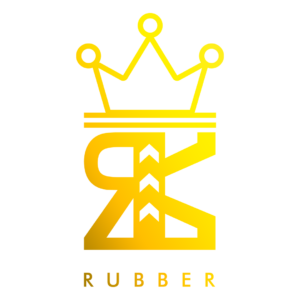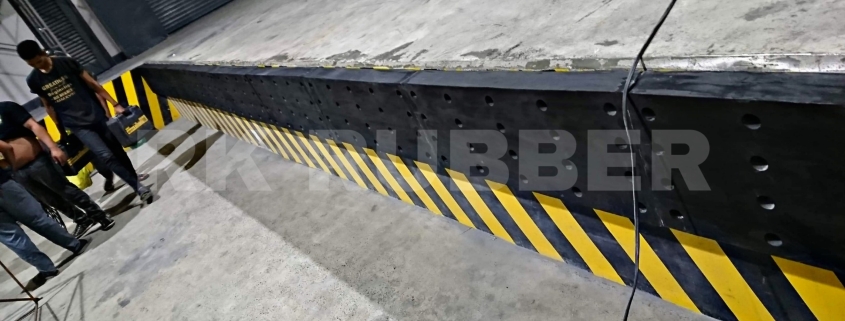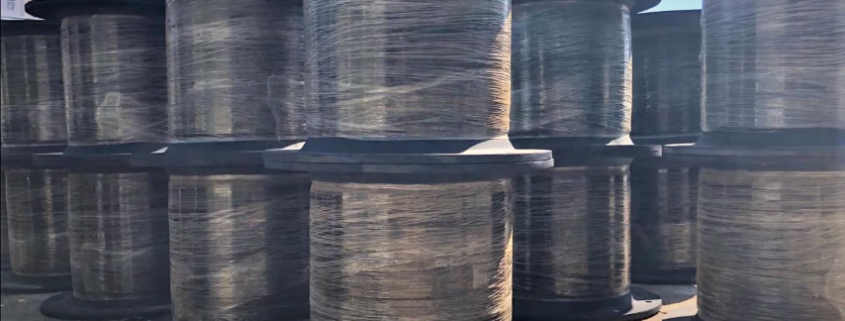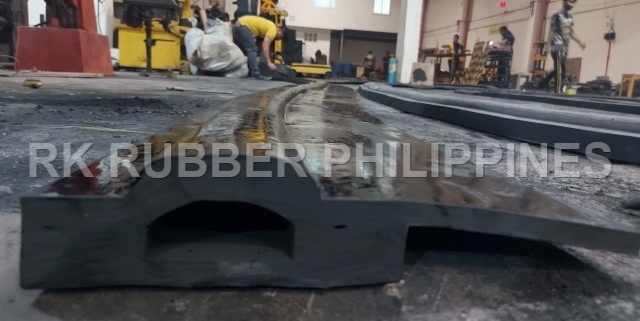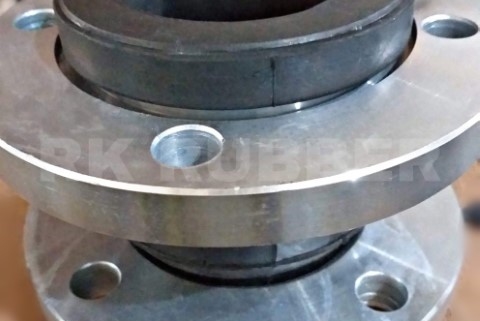How to Choose Corrosion-Resistant Bumpers for Ports
Select bumpers by matching quantified marine exposure, energy absorption, and proven material data. Specify salinity, splash zone, immersion cycles, wave energy and pollutant load. Favor polyurethane or engineered elastomers for abrasion and damping, fiber‑reinforced composites for corrosion immunity where stiffness tailoring is needed, and stainless or duplex fasteners with dielectric isolation to prevent galvanic cells. Require cyclic exposure test data, passivation certificates, torque protocols, and lifecycle cost models with inspection intervals. Further guidance outlines sizing, mounting, and maintenance.
Key Takeaways
- Specify quantified environmental drivers (salinity, tidal range, splash frequency, pollutant load, wave energy) rather than generic “coastal” labels.
- Match bumper material to required energy absorption (kJ), deflection envelope, and rebound characteristics from vessel load mapping.
- Prioritize corrosion-resistant materials: UV-stabilized polyurethane, certified elastomer compounds, or fiber‑reinforced composites with documented test data.
- Design mounting and fasteners with duplex/316L stainless, dielectric isolation, correct torques, and sacrificial anodes sized by electrochemical demand.
- Require coatings, surface prep, inspection intervals, warranty durations, and lifecycle cost modeling in procurement specifications.
Understanding Marine Environmental Challenges for Port Bumpers
In evaluating port bumper performance, the marine environment imposes a complex set of stressors—chloride-laden spray, cyclic wetting and drying, UV exposure, biofouling, and abrasive sediment action—that accelerate corrosion and material degradation; designers and procurement teams must therefore specify materials and protective systems based on quantified exposure factors (salinity, tidal range, pollutant load, wave energy) rather than generic coastal classifications. Assessment protocols emphasize measured tidal salinity gradients, peak splash zones, and immersion duration to predict galvanic risk and coating breakdown. Supply decisions require lifecycle cost models incorporating inspection intervals, replacement logistics, and downtime. Material selection criteria prioritize corrosion-resistant substrates, sacrificial anodes where applicable, and coatings rated for UV and marine biofouling resistance. Procurement specifications should mandate test data for simulated cyclic exposure and defined acceptance thresholds.
Comparing Materials: Rubber, Polyurethane, and Composites
For procurement and design teams evaluating port bumper options, rubber, polyurethane, and composite materials present distinct trade-offs in wear resistance, energy absorption, UV and chemical stability, and long-term maintenance burden. Natural and synthetic elastomers offer high damping and proven fender longevity but can suffer ozone and hydrocarbon degradation; selection requires specification of compound formulations and stabilizers. Polyurethane grades deliver superior abrasion resistance, load-bearing capacity, and retained mechanical properties in saline exposure, though some formulations require UV inhibitors to reduce surface crazing. Fiber-reinforced composites combine corrosion immunity and low maintenance with tailored stiffness, but require attention to impact damage modes and joint corrosion control. Supply considerations include lifecycle cost modeling, sourcing of certified materials, compatibility with existing fixtures, and inspection intervals defined in procurement contracts.
Assessing Load, Energy Absorption and Shoreline Dynamics
Following material selection and lifecycle considerations, attention shifts to the mechanical interactions between vessel forces, bumper behavior, and shoreline conditions that govern performance under service loads. Assessment begins with systematic load mapping: identifying impact locations, peak forces, approach angles, and frequency for typical vessel classes. Material-centric energy modeling converts those inputs into required energy absorption, displacement limits, and rebound characteristics for candidate elastomers or composites. Shoreline dynamics — tidal range, wave spectra, and substrate compliance — modify boundary conditions and alter effective stiffness and damping. Procurement specifications should reference quantified energy ratings (kJ), deflection envelopes, and validated load maps so suppliers can match formulations and profiles. The result is objective selection criteria that balance corrosion-resistant material properties with proven mechanical performance.
Corrosion-Resistant Mounting Systems and Hardware
Selection of stainless steel fasteners is critical for mounting port bumpers, with alloy grade and heat treatment determining tensile strength and corrosion resistance. Protective marine-grade coatings on hardware extend service life by sealing galvanic contact points and resisting abrasion from ropes and fenders. Attention to galvanic corrosion protection—use of insulating washers, sacrificial anodes, and compatible material pairings—prevents accelerated deterioration at assemblies.
Stainless Steel Fasteners
Specify stainless steel fasteners engineered for marine environments to guarantee secure, long-lasting attachment of port bumpers and related hardware. Selection emphasizes duplex and 316L grades for chloride resistance, correct heat treatment, and controlled machining to prevent hydrogen embrittlement. Passivation techniques and clean handling restore chromium oxide films after fabrication, reducing crevice corrosion risk. Designers and procurement specify ASTM/ISO standards, thread class, and surface finish to assure interchangeability and performance. Corrosion-resistant washers, locknuts, and sacrificial isolation (non-conductive sleeves) minimize galvanic cells with adjacent substrates. Installation protocols detail bolt torquing sequences, calibrated tools, and re-torque intervals to maintain clamp load without overstressing components. Traceability, material certificates, and vendor quality control complete a supply-focused strategy for durable marine fastener systems.
Marine-Grade Coatings
In marine environments, coatings for mounting systems and hardware function as the primary barrier against chloride-driven corrosion, abrasion, and UV degradation, so material selection centers on proven chemistries and application processes that deliver predictable service life and maintain mechanical fit. Typical choices include epoxy primers for adhesion, polyurethane topcoats for abrasion and UV resistance, and fluoropolymer finishes where extended color and gloss retention are required. Specification should reference salt spray test durations, film thickness, adhesion (cross-cut or pull-off) and cure schedules compatible with substrate metallurgy and torque-critical threads. Surface preparation—blast profile, cleanliness, and conversion coatings—determines coating performance. Procurement prioritizes suppliers with certified quality systems, traceable test data, and warranties that quantify corrosion allowance and scheduled maintenance intervals.
Galvanic Corrosion Protection
When exposed to dissimilar metals and seawater, galvanic interactions become the dominant failure mode for mounting systems and hardware, so designers must guarantee electrochemical potential differences through material pairing, isolation, and sacrificial protection. Selection emphasizes close galvanic series adjacency—stainless grades, duplex alloys, or coated aluminum—minimizing driving potential. Dielectric barriers, non-conductive fasteners, and isolation washers interrupt current paths. Where isolation is impractical, engineered sacrificial anode systems protect critical attachments; anode sizing and placement follow current demand calculations. Fastener metallurgy, torque specification, and coating integrity are supply-chain checkpoints. Electrochemical monitoring informs maintenance cycles and quantifies anode depletion and coating breaches. Procurement specifications should mandate testable materials, traceable certifications, and replacement intervals tied to monitored corrosion rates to guarantee durable, serviceable mounting hardware.
Size, Shape and Profile Selection for Different Vessel Types
For each vessel class, bumper dimensions, curvature and cross-sectional profile are chosen to match hull geometry, berthing energy, and mooring dynamics. Selection prioritizes Vessel specific profiles and Impact resistant contours to distribute loads, minimize point stresses, and guarantee material endurance in saline environments. Design parameters include contact area, deflection capacity and anchorage spacing, tied to vessel displacement and approach speeds.
-
Container ships: deep-faced, high-modulus profiles with wide contact bands to spread concentrated loads and resist shear.
-
Tankers and bulk carriers: curved, energy-absorbing sections with corrosion-resistant cores and replaceable sacrificial faces.
-
Ferries and small craft: low-profile, high-compliance bumpers with UV-stable elastomers for frequent, low-energy impacts.
Inspection, Maintenance and Repair Strategies
Routine visual inspections establish baseline condition data for bumpers, identifying surface degradation, fastener integrity, and protective coating failures. A scheduled preventive maintenance regime, keyed to material type and exposure severity, reduces progressive corrosion and extends service life through cleaning, recoating, and hardware replacement. When deterioration is detected, corrosion-focused repair planning prioritizes compatible materials, cathodic considerations, and minimal downtime restoration methods.
Regular Visual Inspections
Regularly scheduled visual inspections of port bumpers prioritize identification of corrosion initiation, structural deformation, and coating degradation to enable timely maintenance interventions. Inspectors document surface pitting, blistering, adhesion loss, fastener corrosion, and rubber compound cracking. Visual documentation and crew training are integral: standardized checklists and photographic logs guarantee material condition tracking and repeatable assessment quality.
-
Record observable corrosion types, locations, and progression rates with calibrated scales and dated imagery.
-
Confirm fastener torque, weld integrity indicators, and polymer or elastomer condition against material specifications.
-
Flag anomalies for metallurgical or coating analysis, and assign repair priority based on exposure severity and operational risk.
This protocol supports supply decisions, lifecycle cost analysis, and informed selection of corrosion-resistant bumper materials.
Scheduled Preventive Maintenance
Periodically scheduled preventive maintenance programs define specific inspection, upkeep, and repair actions tied to material type, exposure profile, and supply-chain lead times to maximize port bumper service life and readiness. The regimen prescribes inspection intervals for rubber, composite, and metal-faced bumpers, links test methods to degradation modes, and prioritizes parts based on corrosion risk and replacement lead times. Maintenance planning leverages predictive analytics to forecast wear and optimize inventory of sacrificial pads, fasteners, and coatings. Tasks include surface cleaning, coating touch-up, hardware torque checks, and documented condition scoring to trigger replenishment. Coordination with operations assures downtime coordination windows minimize berth disruption. Documentation standards and supplier qualification clauses reduce lead-time variability and sustainability of maintenance cycles.
Corrosion-Focused Repair Planning
Establishing a corrosion-focused repair plan aligns inspection findings with material-specific repair actions, spare parts staging, and supply-chain lead times to restore port bumper integrity with minimal berth downtime. The plan prioritizes electrochemical monitoring data and predictive analytics to schedule interventions before structural loss occurs. Material selection dictates repair techniques, consumables, and trained labor profiles; stainless grades, coated elastomers, and sacrificial anodes each require distinct workflows. Spare inventory is calibrated to failure modes and lead times to avoid berth delays. Communication protocols with fabricators and corrosion specialists guarantee expedited procurement when analytics flag elevated risk.
-
Inspection-triggered repairs tied to electrochemical monitoring thresholds.
-
Parts staging optimized by predictive analytics forecasts.
-
Material-specific repair procedures and qualified supplier lists.
Balancing Initial Cost With Lifecycle Performance
When evaluating port bumper options, procurement teams must weigh upfront purchase price against predicted lifecycle costs, including maintenance, replacement frequency, and downtime impact. Decision frameworks should quantify initial procurement alongside projected service intervals, inspection labor, and consumables. Material selection—rubber compounds, polyurethane, stainless alloys, and composite cores—drives corrosion resistance and energy absorption, directly affecting mean time between replacements. Warranty duration signals manufacturer confidence and reduces total cost of ownership when aligned with expected service life. Supply chains must factor lead times, installation complexity, and recyclability into cost models. Lifecycle cost analyses that model net present value of future expenditures enable objective comparisons. The most advantageous selection minimizes cumulative expenditure while meeting operational safety margins and environmental exposure requirements.
Frequently Asked Questions
Can Bumpers Be Retrofitted to Existing Pilings Without Dock Closure?
Yes; retrofit techniques allow installing bumpers onto existing pilings without full dock closure. Project planners prioritize installation scheduling, material selection, fastening methods, and temporary traffic/phased work to maintain operations while securing corrosion-resistant assemblies.
Do Bumper Colors Affect Marine Wildlife Behavior?
Yes — color contrast can influence species attraction; materials and pigment selection affect visibility, behavioral responses, and fouling patterns. Procurement should evaluate spectral contrast, durability, and ecological monitoring to minimize unintended wildlife interactions.
Are There Environmentally Friendly Disposal Options for Old Bumpers?
Yes. Facilities can utilize recycling programs and material reclamation streams; suppliers coordinate collection, segregate polymers and metals, process for pelletizing or metal recovery, and document chain-of-custody to guarantee environmentally responsible disposal.
Can Bumpers Integrate With Fender Monitoring Sensors?
Yes. The bumper can incorporate sensor integration and provide real time diagnostics; the statement emphasizes corrosion-resistant materials, sealed mounting hardware, cable routing, and power/data interfaces for supply-focused procurement and material-centric lifecycle planning.
Do Insurance Providers Offer Discounts for Corrosion-Resistant Bumpers?
Yes. Insurers may provide insurance discounts for corrosion-resistant bumpers when documented risk reduction and lifecycle savings are demonstrated; underwriting typically evaluates material specs, maintenance records, and supply-chain certifications to quantify reduced claim exposure.
Conclusion
To summarize, port authorities and specifiers prioritize bumpers that combine durable, non-corroding materials and engineered geometries to withstand saline environments, repeated impact, and varying berthing dynamics. Selections favor polyurethane and composite facings with stainless or duplex steel mounting, sacrificial sacrament elements, and modular replaceable pads to optimize energy absorption and minimize maintenance. Lifecycle analyses that weigh upfront costs against replacement intervals and downtime drive procurement toward material-centric, corrosion-resistant systems engineered for predictable serviceability.
